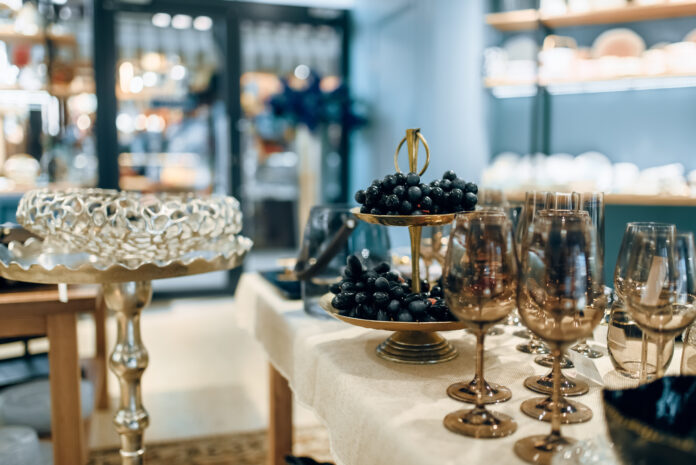As the global travel industry recalibrates for a post-pandemic era, destinations across the world are redefining their competitive edges. Amidst this reshuffling, Sri Lanka has an opportunity to reposition itself, not just as a scenic escape or budget destination, but as a sophisticated, sustainable haven for high-value travellers. To do so, the country must shift gears and fully embrace a luxury tourism model grounded in ecological balance, cultural depth, and experiential richness.
Historically, Sri Lanka has offered an affordable tropical alternative to more expensive Southeast Asian neighbours. That model, while effective in volume terms, has come at a cost.
Overdependence on mass tourism has placed pressure on natural resources, strained local infrastructure, and diluted the uniqueness of the Sri Lankan experience. More critically, it has kept the sector locked in a race to the bottom on price, rather than focusing on value and differentiation.
High-end tourism presents a compelling alternative. It is not merely about marble lobbies or Michelin-level cuisine. Today’s luxury traveller is discerning, experience-focused, and increasingly eco-conscious. They are not looking for opulence without meaning, they are seeking beauty with integrity, culture with substance, and exclusivity without excess. This global segment is growing steadily, with affluent consumers from Europe, North America, the Middle East, and East Asia showing rising interest in sustainable luxury travel. Sri Lanka has
the raw assets to meet their expectations, but converting those assets into value demands more strategic thinking.
The first step is to understand what defines luxury in the modern travel context. Privacy, personalisation, and purpose now matter more than grandeur. A remote eco-lodge offering sunrise meditation overlooking a tea valley may hold greater appeal than a conventional five-star beach resort. A private tour led by a local archaeologist through an ancient forest monastery will resonate more than a crowded day trip. The best luxury experiences feel rare, real, and restorative.
Sri Lanka has already seen early signs of success in this space. Boutique hotels in Galle, wildlife lodges in Yala, and wellness retreats in the central highlands have garnered global attention for their refined offerings. Properties such as Wild Coast Tented Lodge, Uga Escapes, and Santani Wellness Resort have won accolades not only for service quality but also for architecture, sustainability, and storytelling. These businesses cater to travellers who value quality over quantity, silence over crowds, and immersion over itineraries.
What these success stories show is that luxury tourism does not have to be extractive. In fact, it can be regenerative. High-end guests tend to stay longer, spend more, and travel more respectfully. When curated well, luxury tourism disperses economic benefits across artisan networks, organic farmers, wellness practitioners, and conservation programs. This decentralised value chain can empower rural economies while protecting cultural and environmental heritage.
But to scale this vision, the supporting ecosystem must evolve. Sri Lanka needs a clear national strategy that defines its luxury tourism identity. This should include zoning policies that preserve ecological sanctity, fiscal incentives for sustainable construction, and support for homegrown luxury brands. Regulations must discourage overdevelopment in fragile zones and promote architecture that harmonises with the landscape. Certification frameworks
can reward operators who meet ethical and environmental standards while offering credibility in international markets.
Moreover, luxury tourism requires talent that understands discretion, refinement, and global service standards. Investment in specialised hospitality training, particularly in languages, wellness therapy, and culinary arts, can uplift local employment and ensure consistency across the guest experience. At the same time, the sector must avoid becoming an enclave economy. High-end tourism should not isolate wealth but channel it meaningfully into surrounding communities.
Marketing is another critical component. Sri Lanka’s tourism campaigns have long prioritised volume over segmentation. A new narrative is needed, one that speaks directly to the sophisticated traveller. This includes showcasing architectural beauty, cultural intimacy, spiritual heritage, and biodiversity through the lens of luxury. Rather than package deals and last-minute offers, campaigns should evoke emotion, aspiration, and a sense of wonder.
Digital platforms and partnerships also play a role. Collaborating with premium booking services, high-end travel advisors, and global lifestyle influencers can ensure Sri Lanka is visible where the right audiences are searching. Attending global luxury trade shows and inviting elite travel media to experience the country first-hand can elevate perception and position Sri Lanka in the top tier of sustainable travel destinations.
That said, not all of Sri Lanka needs to be reoriented for luxury tourism. A segmented approach is essential. While certain coastal zones or cultural cities can continue to cater to mid-range tourists, select regions, particularly those with sensitive ecosystems, cultural depth, or panoramic isolation, can be designated for high-end development. Places like the Knuckles Range, Gal Oya, Wilpattu’s buffer zones, or less-touristed heritage towns can become the
canvas for low-density, high-impact tourism models.
The luxury pivot is not about exclusivity for its own sake. It is about creating space for travel
that is slower, deeper, and more sustainable, for both visitors and the people who host them. It
is about investing in authenticity, not replication. And it is about building a tourism economy
that values long-term prosperity over short-term numbers.
Sri Lanka sits on the edge of a global shift. Travellers are no longer content with predictable
experiences. They are searching for meaning, transformation, and places that feel unspoiled
by over-commercialisation. The island’s opportunity lies not in chasing trends, but in refining
its identity. With vision, restraint, and strategic alignment, Sri Lanka can become a sanctuary
for the thoughtful, high-value traveller, an island of elegance, purpose, and profound beauty.




